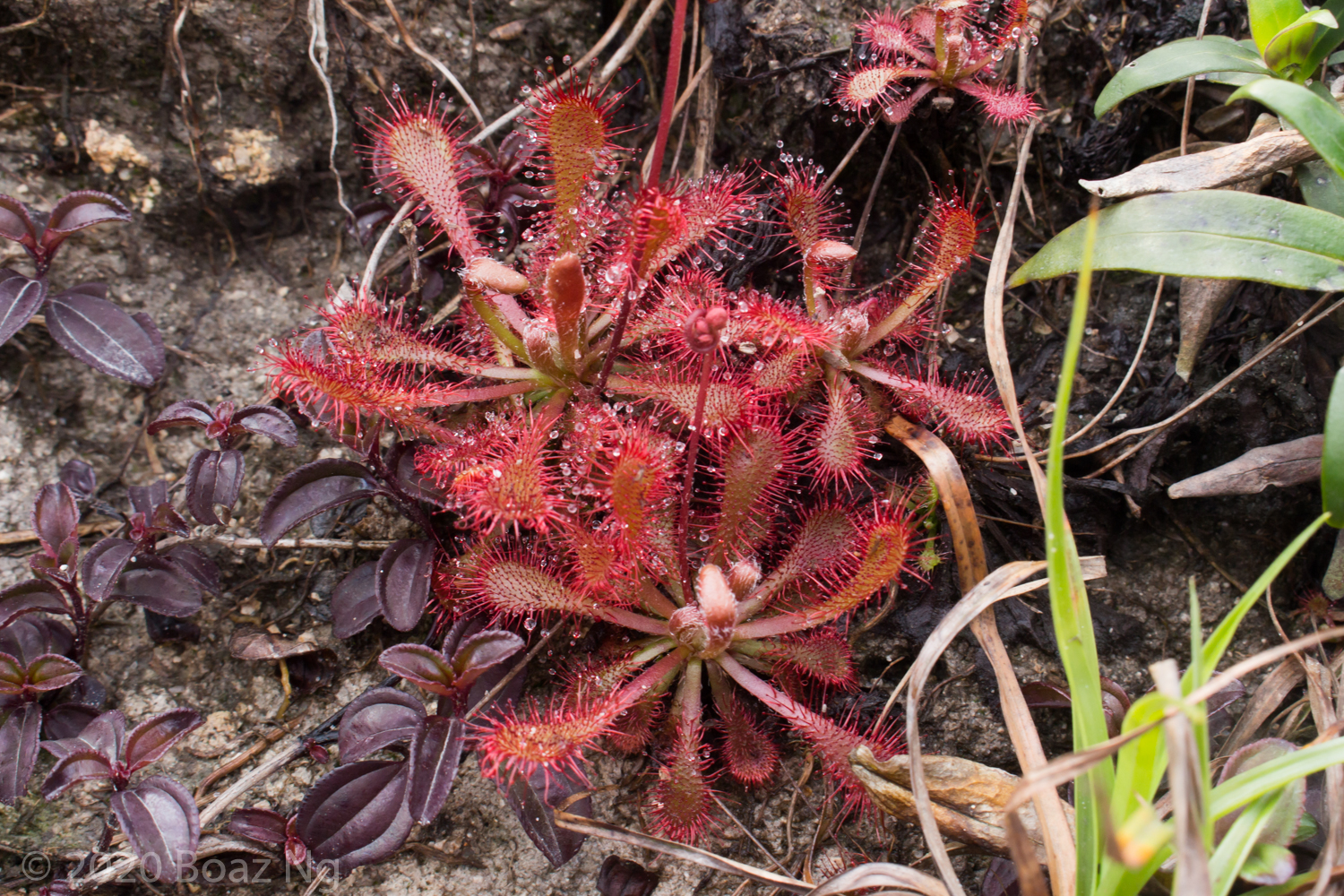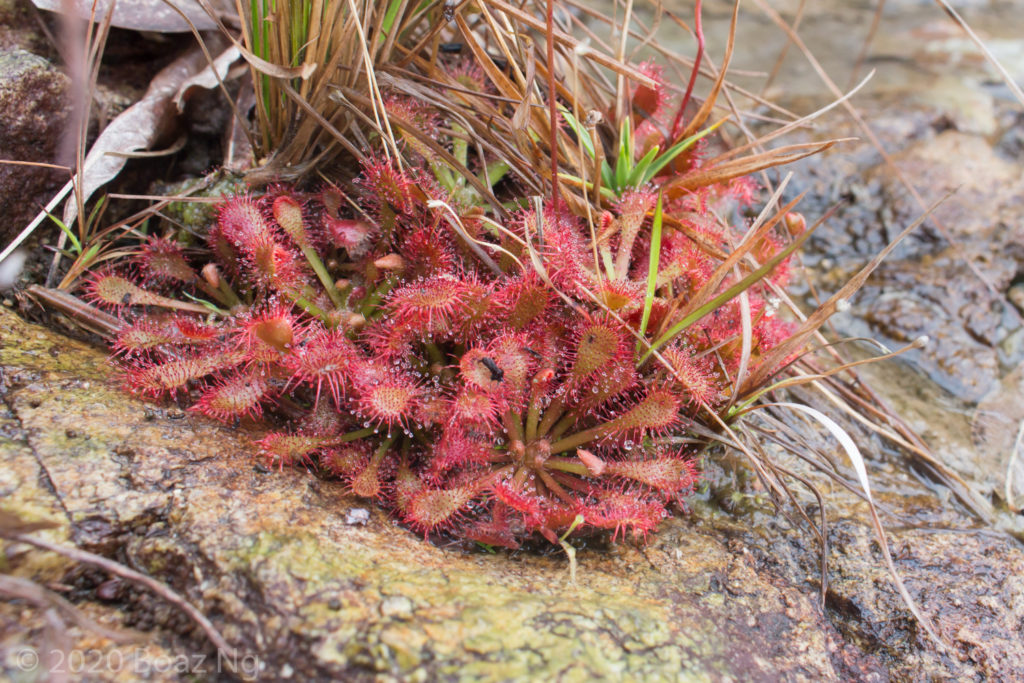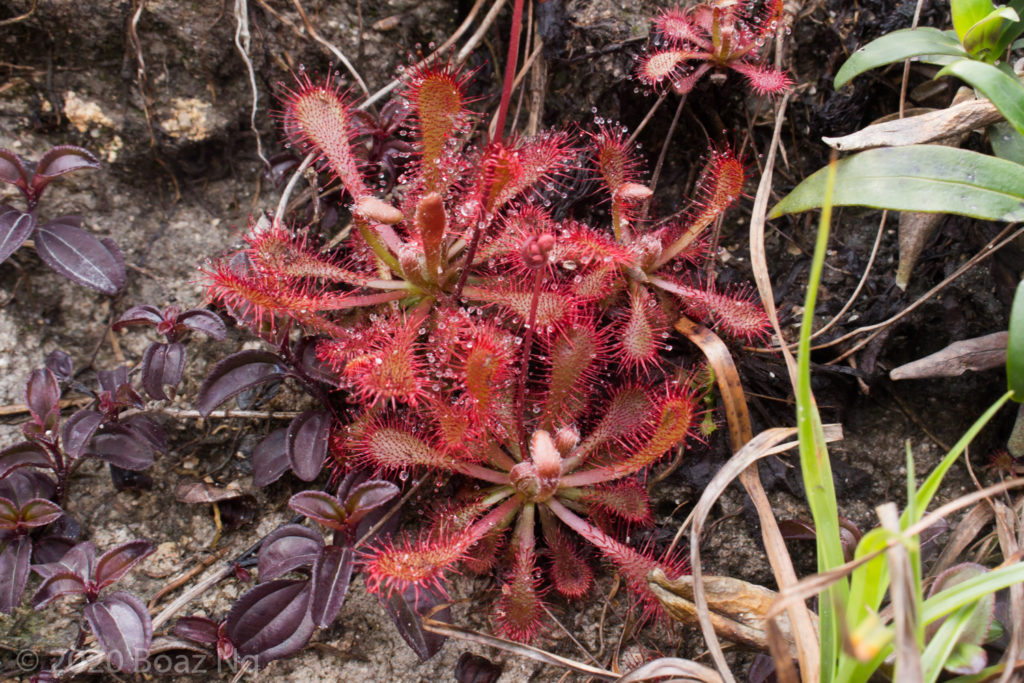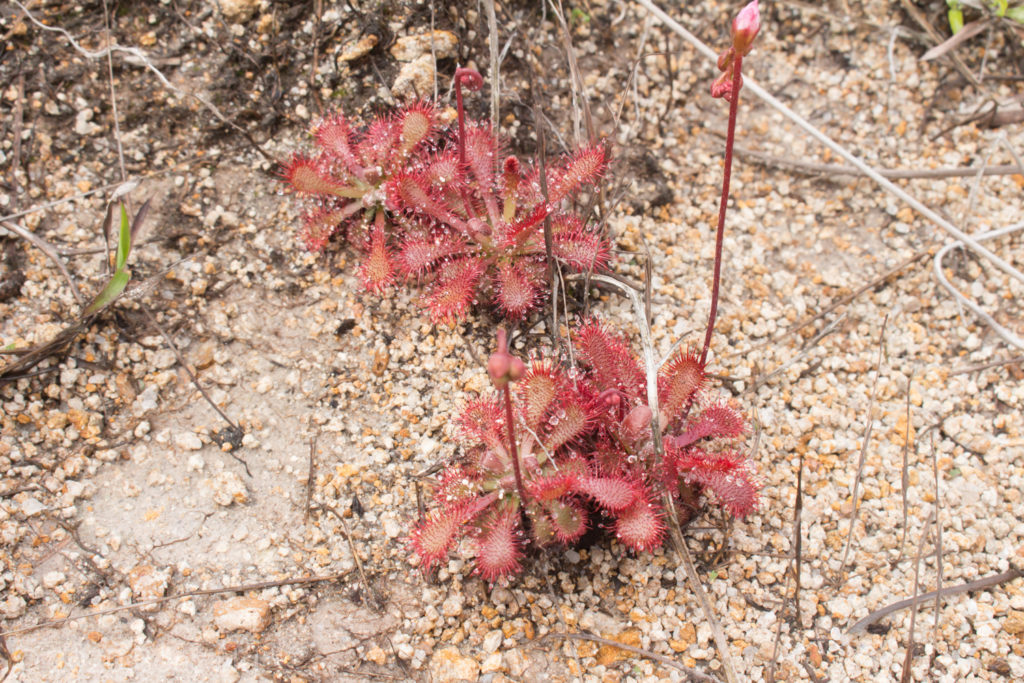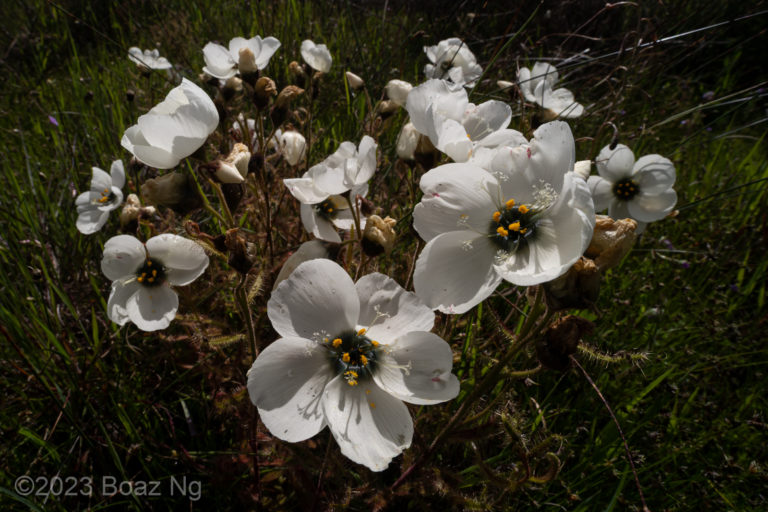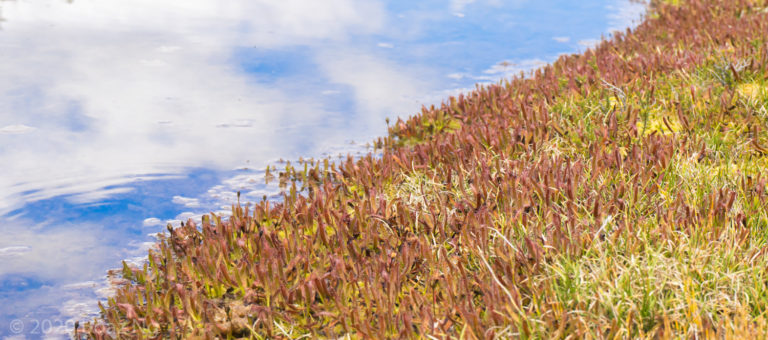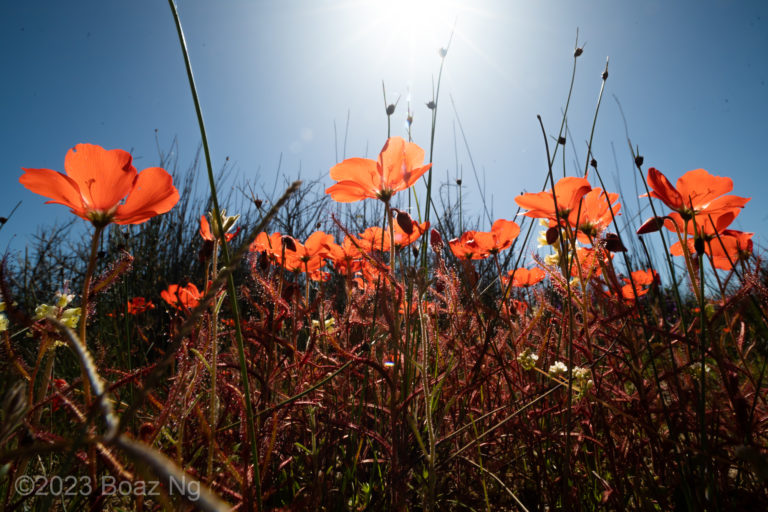In Hong Kong and Macau, two coastal cities situated at the mouth of the Pearl River Delta, grow interesting examples of plants in the Drosera spatulata complex.
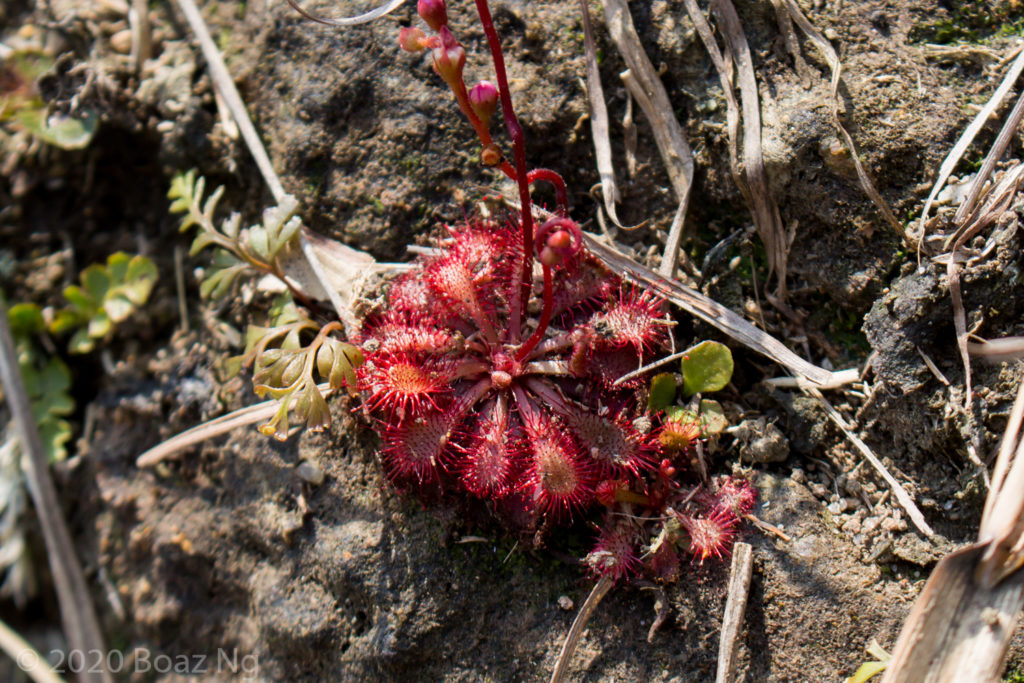
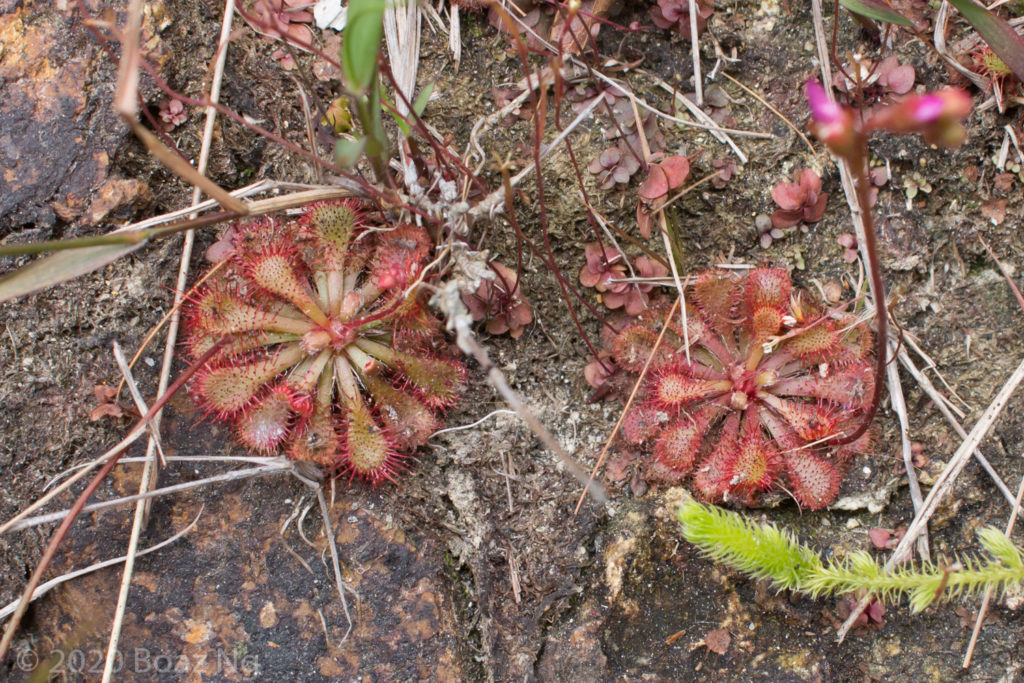
Throughout Hong Kong, the standard form of Drosera spatulata (D. spatulata var. spatulata) can be found growing in seepages, road cuts and creeks. This form has a gradual transition between the petiole and lamina, with a tentacle density that gradually diminishes towards the centre of the plant. The plants in Hong Kong are small, reaching a diameter of around 2-3 cm.
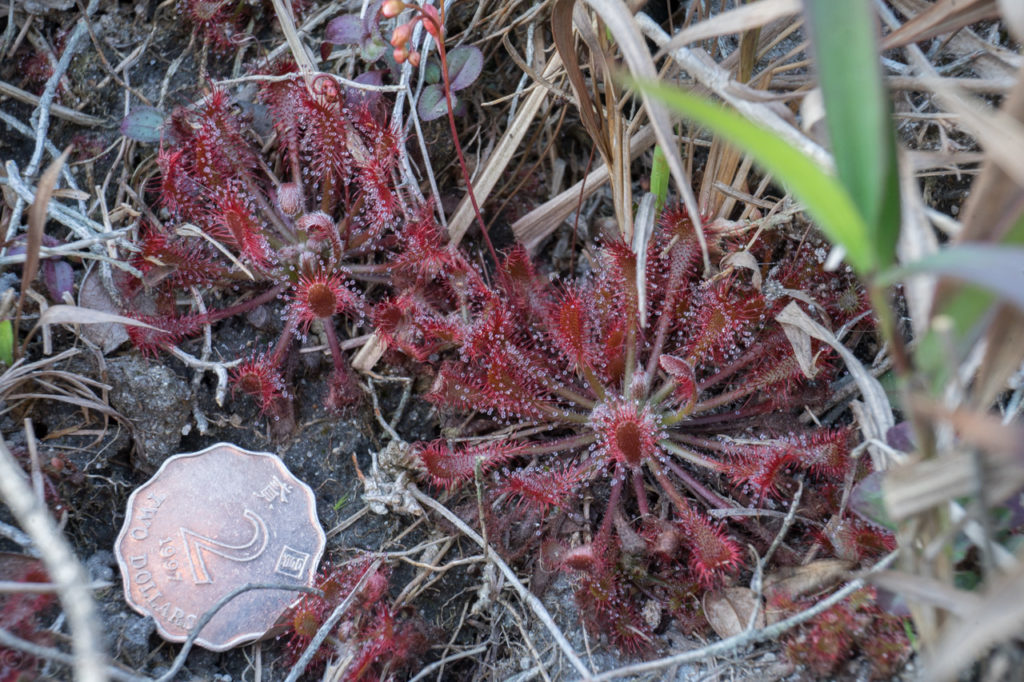
A close relative but distinct species, Drosera oblanceolata, grows in the mountains of Hong Kong in exposed meadows above the tree line. The species is characterised by a long hairy petiole that is clearly distinct from the lamina. In mature specimens, the leaf is reflexed inwards and upwards, giving the plants an overall raised profile. Drosera oblanceolata is much larger than D. spatulata, typically reaching around 6-8 or so cm in diameter.
On a certain mountain range in Lantau Island, HK, both D. spatulata and D. oblanceolata occur and there is large gene flow between the two species. The natural hybrid is very vigorous and self fertile, and has dominated the area over the parent species. The plants here cover a full spectrum of intermediate morphologies between the two species. Interestingly, Hooker & Arnott described a taxon in 1841 as Drosera loureirii, which although sometimes reduced to synonymy with D. spatulata, appears to represent this hybrid. The variety in cultivation called “Drosera sp. Lantau Island” originated from this site.
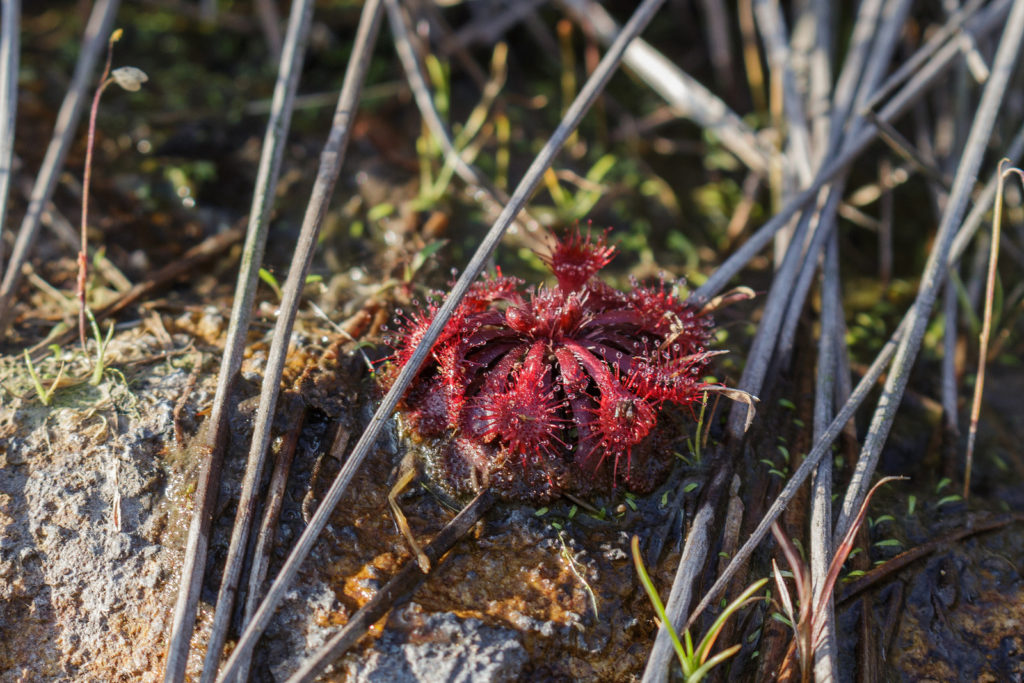
Also growing on Lantau Island is an interesting dwarf red form of Drosera spatulata with a long petiole out of which abruptly terminates in a rounded petiole. I suspect that long petioles might be the result of introgression with D. oblanceolata. The population is somewhat threatened by the more vigorous hybrid, which might out compete the variety.
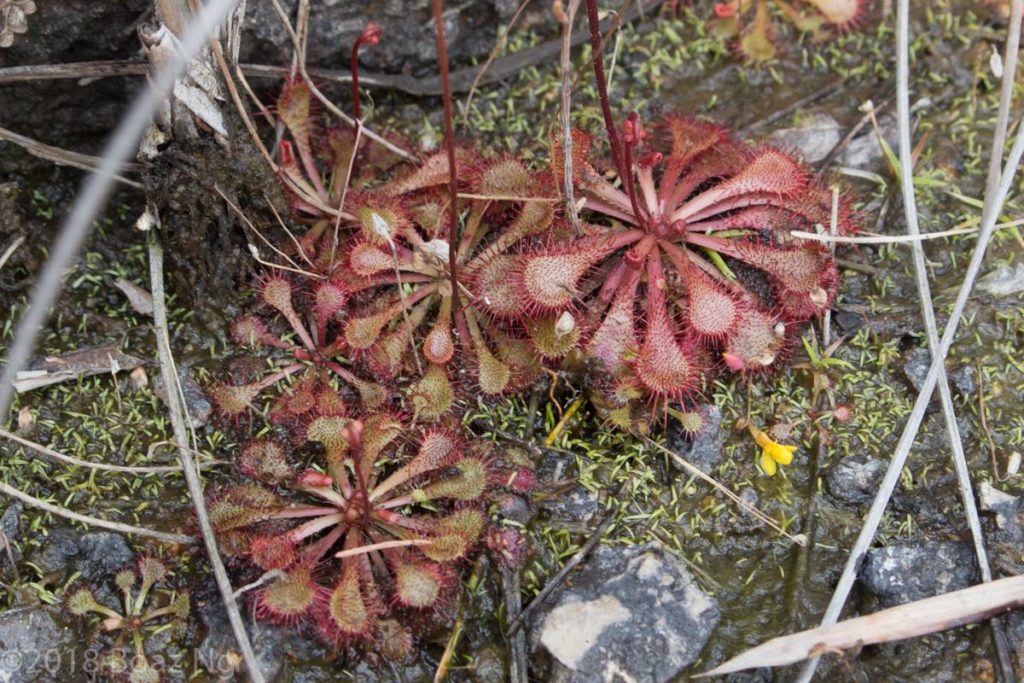
Another unique taxon occurs in Macau on the other side of the delta. In contrast to typical Drosera spatulata, these plants are robust with a long petiole and a distinct transition with the rounded wedge-shaped lamina. This leaf shape reminds me of the D. tokaiensis in cultivation – perhaps these are the progeny of an ancient hybrid between D. rotundifolia and D. spatulata? The plants grow on seepages along a small coastal strip.

